Are you looking for a flower starting with G, but you can’t remember its name to save your life? You’re in luck! Below, you’ll find a list of sixteen flowers that start with G.
Some of them are endemic species that you might never see, while others are so easy to grow, you can seed them in your garden right now.
Without further ado, let’s take a look at these beautiful plants.
Table of Contents
1. Geraniums

Geraniums are a large group of flowering plants with more than 400 recognized species (and goodness knows how many cultivars).
They can be found in temperate climates all over the world, as they easily adapt to any type of soil.
Their flowers are usually blue, purple, pink, or white, but there are cultivars with other colors.
Geraniums have a long flowering period, lasting from late spring to fall (they often bloom until the first frost).
2. Gladiolus
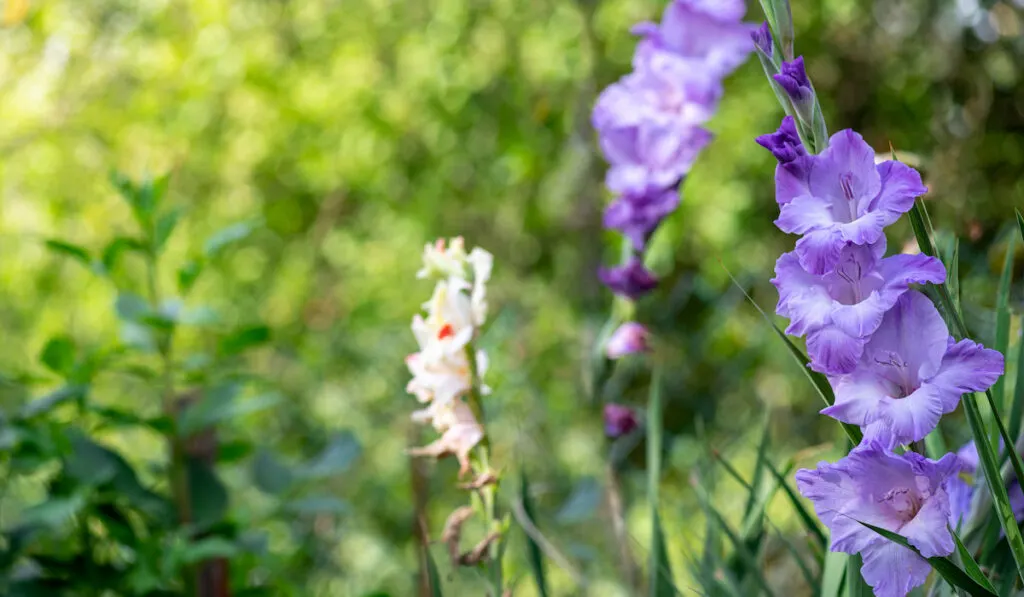
Gladiolus, also known as ‘sword lilies’ because gladius means sword in Latin, belongs to a genus in the iris family.
There are about 300 species of gladiolus, the vast majority of which are endemic to southern Africa.
Aside from Africa, you can find them in Europe, Asia, and North America, where they bloom in various colors – ranging from red to white.
Gladiolus bloom in the summer, and the flowers naturally die as the temperatures drop.
3. Gaillardias

These flowering plants are also known as blanket flowers, as they are reminiscent of lively-colored Native American blankets.
The flowers can be unicolor, but there are some varieties with multicolored flowers, such as the Indian blanket flower.
Gaillardias can grow up to 30 inches, making them taller flowering plants. They usually begin blooming in early summer and the bloom lasts long into the fall.
4. Gazanias
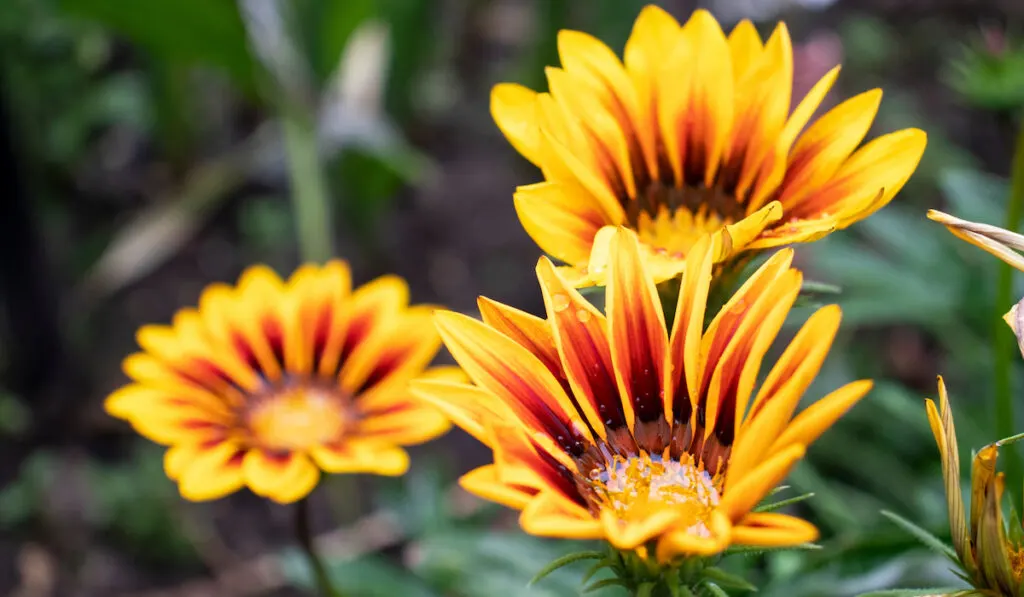
Naturally, these flowers are found in southern Africa, but they’ve been naturalized in California, Australia, New Zealand, and a few Mediterranean countries.
There are 18 species of gazanias, and they’re all known for their strikingly orange, white, yellow, and pink flowers, which usually bloom in the summer.
Because they’re used to the southern African climate, they’re particularly drought tolerant.
5. Gauras

Very common under the name bee blossom, gaura flowers belong to a genus with 22 species. They’re native to the southern United States and part of Mexico, where they’re considered a weed.
They can grow up to 7 feet tall and they form a bush-like growth, preventing sunlight from getting to other plants in their immediate area.
The flowers are tiny in comparison to the rest of the plant, and they’re usually white, creamy, or pink.
6. Gerberas
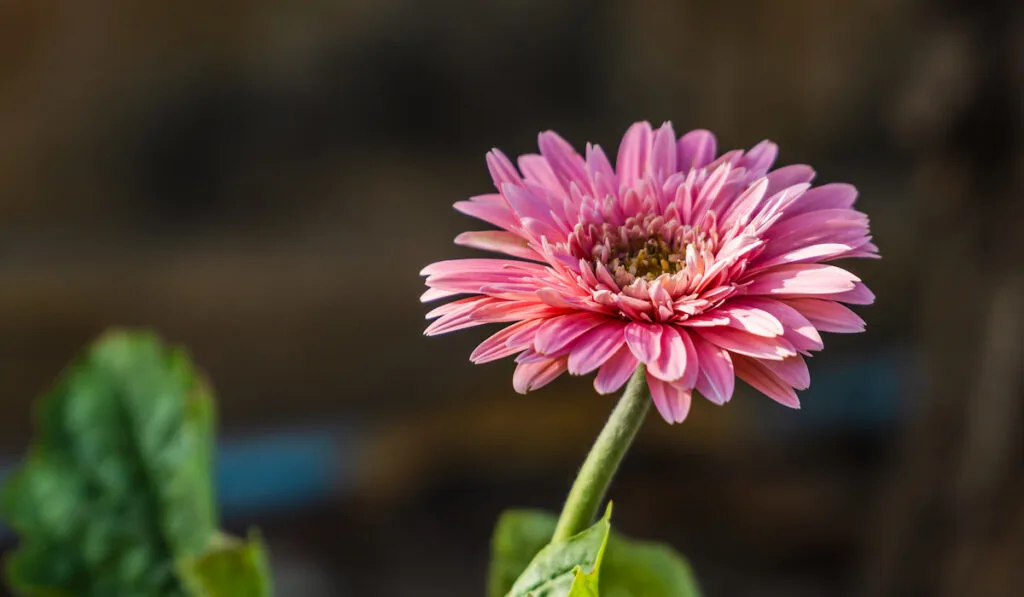
With 22 species in the genus, gerberas are taller flowering plants, growing up to 30 inches, with flowers in all shades except blue and purple.
Although these flowers were introduced to South America and Mexico, they’re native to Africa.
Gerberas are one of the most used flowers in floral arrangements.
This flower is very common in home gardens, especially in container gardening, as it’s relatively easy to grow. Some flowers have black centers, making them reminiscent of sunflowers.
7. Gloxinias

The gloxinia genus is a small one with only three species. Depending on the species, the flowers may be pink, purple, white, or red.
They’re rare plants, normally found in Central America, a few islands in the Indies, and the Andes.
8. Godetias

This flowering plant is native to North America – it can be found in British Columbia and the San Francisco Bay.
Godetia flowers are easy to spot, as they can be 2.5 inches long, while the plant itself can grow to about 3 feet in height.
There are three subspecies of this plant, and all three have characteristically pink-white flowers. Aside from growing in the wild, they’re easily grown in gardens.
9. Garden Phlox

Although it’s native to the USA, the garden phlox was introduced to several regions across Canada, Europe, and Asia. Since it reproduces very easily, it has spread rapidly across its adoptive homes.
This flower is exceptionally beautiful – some varieties can grow close to 50 inches in height, and the flowers let off a very powerful scent. The flowers are pink, purple, magenta, or coral, sometimes combined with white.
Aside from growing it for decoration, garden phlox has some medicinal properties, which is why it’s often used in traditional medicine.
10. Giant Hyssop
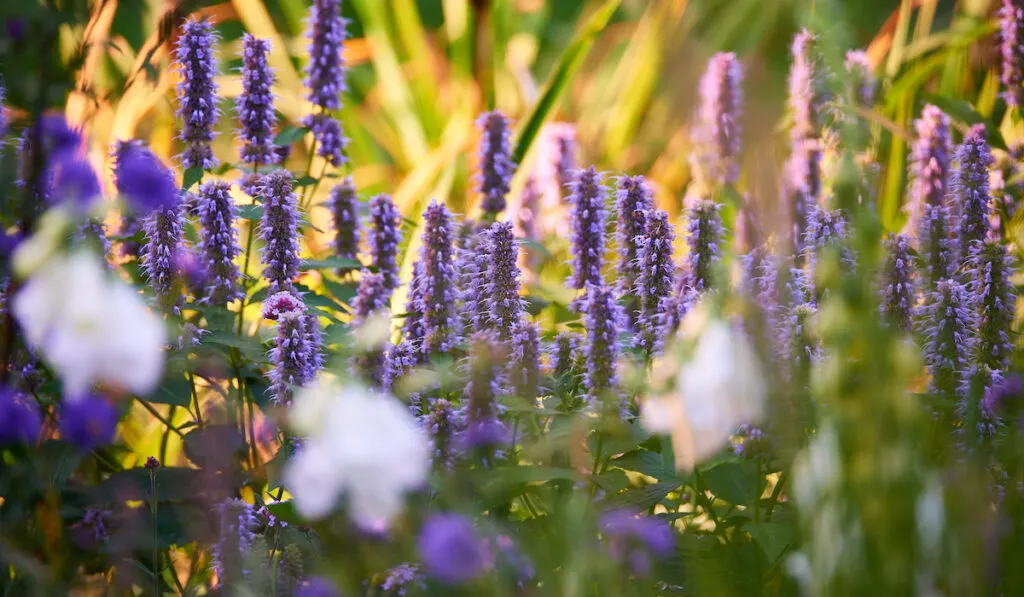
Giant hyssops are appropriately named, as they can grow up to 10 feet tall.
There are 22 species of the giant hyssop, all of which are native to North America. The flowers, which bloom in the summer, come in many colors – white, pink, blue, and purple. Hummingbirds and butterflies flock to its vibrant spires in the summer.
11. Globeflowers
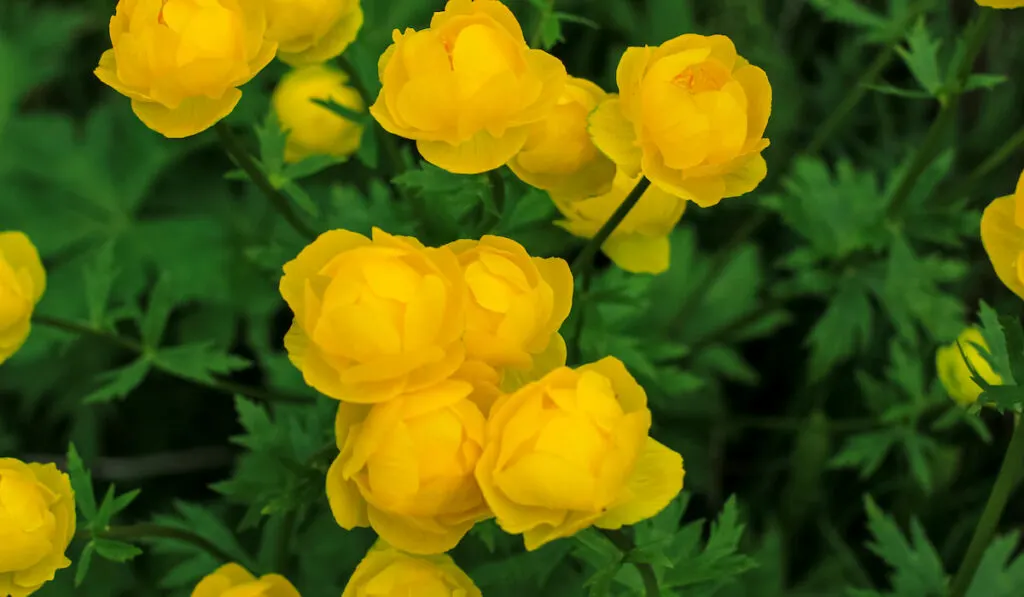
There are about 30 species of globeflowers, which were named after their characteristically spherical shape.
Globeflowers occur naturally in Asia, Europe, and North America, although they can be grown in gardens worldwide.
The flowers are usually yellow or orange, and the entire plant is poisonous to mammals.
12. Golden Corydalis
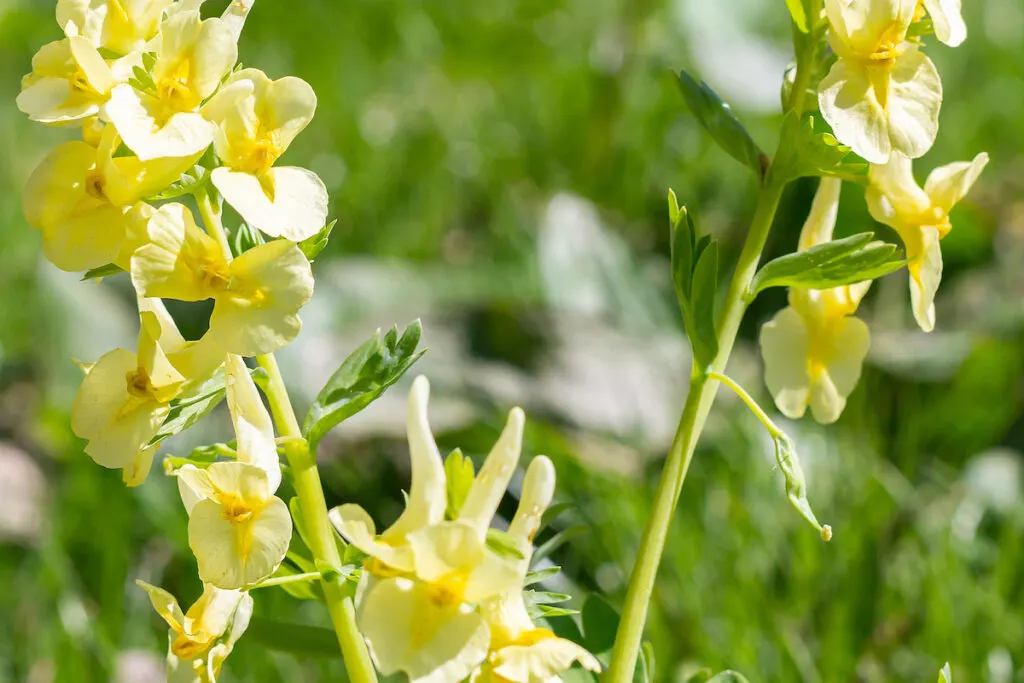
You might have heard of this plant under the name scrambled eggs, which was given to the plant because its flowers are oddly reminiscent of scrambled eggs.
This flower is actually a poppy, and there are more than 30 flowers per plant. It’s native to North America, where it’s a plant characteristic of rocky, forested habitats.
13. Glossolomas
Glossolomas are flowering plants endemic to Ecuador, characterized by their red tubular flowers.
They are formally classified as subshrubs, and they’re most common in tropical and subtropical forests (usually on mountain slopes).
14. Golden Knee

The golden knee is a species of flowering plant native to the East Coast of the U.S., but there are a few varieties naturally occurring in other states as well.
Golden knee’s flowers are round, and the petals are disc-like, with a characteristically yellow color.
Because of its shape and color, the golden knee is also known as the goldenstar.
15. Globe Thistle

There are about 120 species of the globe thistle, which was named after its easily recognizable spherical shape. In the wild, they occur in Asia, Africa, and Europe.
Although they’re usually about 3-4 feet in height, they can reach 7 feet in some cases. They usually grow in rocky areas that get plenty of sunlight throughout the day.
16. Gentian Speedwell
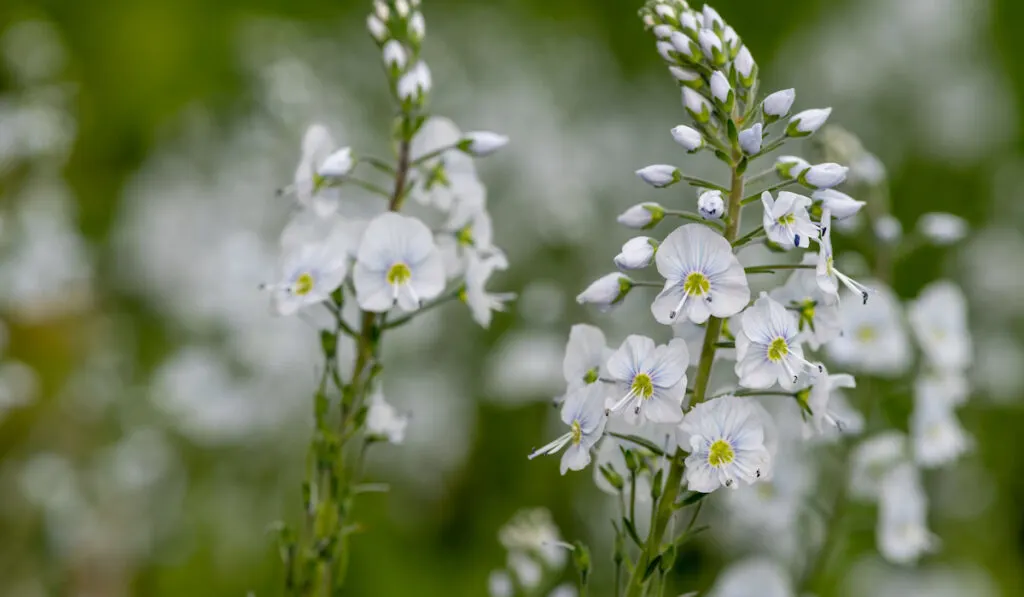
The final entry to the list, the gentian speedwell, is a Middle Eastern species of flowering plant that blooms in the summer.
The flowers are usually white or blue, while the plant itself can grow up to 16 inches. The gentian speedwell easily grows in gardens if its original habitat is mimicked.
To Sum Up
Geraniums and gladiolus are the most well-known flowers starting with G, but we can’t forget golden knees, globeflowers, and the globe thistle as popular representatives of this group.
Some of these flowers are a bit rare, such as the gentian speedwell and the gloxinias, which are rare in home gardens and you can only find them in the wild or specialized botanic gardens.
All in all, that’s it for flowers that start with G — if you’re interested in flowers that start with other letters, feel free to check out some of our other lists.
Resources
- https://hort.extension.wisc.edu/articles/gaura-gaura-lindheimeri/
- https://calphotos.berkeley.edu/cgi/img_query
- https://powo.science.kew.org/taxon/urn:lsid:ipni.org:names:193615-2
- https://www.fs.usda.gov/database/feis/plants/forb/coraur/all.html
- http://www.efloras.org/florataxon.aspx?flora_id=2&taxon_id=200023870
